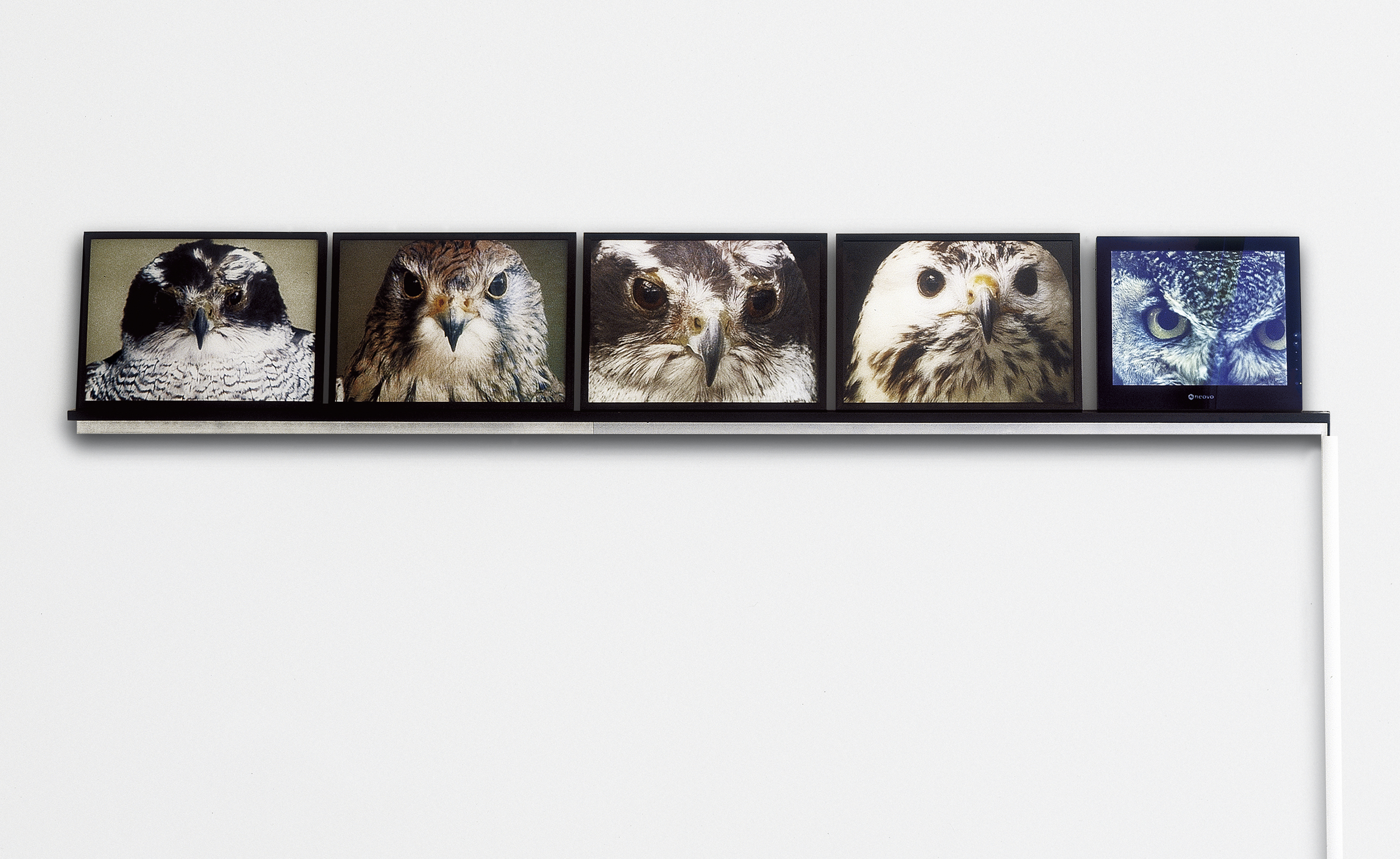Marie José Burki was born in 1961 in Bienne. The artist’s first interest was French literature in fact, which she studied before enrolling at Geneva’s École supérieure d’art visuel in 1983. There she took classes given by Silvie and Chérif Defraoui whilst continuing with her studies in literature. After completing her degrees, Burki left Geneva to live and work in Paris and later New York.
In 1992 she took part in Documenta IX in Kassel (the director that year was Jan Hoet), exhibiting videos that explored the themes of the gaze and blindness. Whereas her earliest pieces were constructed like films, Burki later started to work on the ways moving images are shown, creating installations that are specifically tailored to the context of the exhibition, as in 1994 at Mamco in Geneva, and the following year at Basel’s Kunsthalle.
In 1993 she started dividing her time between Brussels and Geneva, and in 1994 began teaching regularly, first at Amsterdam’s Rijksakademie, then at Hamburg’s Hochschule für Bildende Künste, and finally at Paris’s École nationale supérieure des beaux-arts.
Burki works mainly as a video artist and creator of installations, although her output also includes photography, art objects and silkscreen prints. She creates pieces that are imbued with a rigorous formal soberness in terms of their placement in space and their execution. At the start of her career, the artist mainly dealt with the question of time, the time an image takes to materialise on the screen or is needed to produce a narrative, the time to wander about on foot or to explore mental images.
As for literature, her first love, and especially language, Burki reserves a predominant place for them in her approach to art, and indeed they figure in her videos in a number of ways. Thus, metaphor, analogy, narrative structures and tautology help to organise the image and its repetitive loops. One could read all of her work, moreover, as being articulated around a single rhetorical device, namely, litotes or understatement. Marie José Burki’s work is far from the spectacular and the redundant, and thanks to the simplicity of her images and the devices she employs to show her pieces, this artist says much less outright than she quietly suggests in the end.
In 1992 she took part in Documenta IX in Kassel (the director that year was Jan Hoet), exhibiting videos that explored the themes of the gaze and blindness. Whereas her earliest pieces were constructed like films, Burki later started to work on the ways moving images are shown, creating installations that are specifically tailored to the context of the exhibition, as in 1994 at Mamco in Geneva, and the following year at Basel’s Kunsthalle.
In 1993 she started dividing her time between Brussels and Geneva, and in 1994 began teaching regularly, first at Amsterdam’s Rijksakademie, then at Hamburg’s Hochschule für Bildende Künste, and finally at Paris’s École nationale supérieure des beaux-arts.
Burki works mainly as a video artist and creator of installations, although her output also includes photography, art objects and silkscreen prints. She creates pieces that are imbued with a rigorous formal soberness in terms of their placement in space and their execution. At the start of her career, the artist mainly dealt with the question of time, the time an image takes to materialise on the screen or is needed to produce a narrative, the time to wander about on foot or to explore mental images.
As for literature, her first love, and especially language, Burki reserves a predominant place for them in her approach to art, and indeed they figure in her videos in a number of ways. Thus, metaphor, analogy, narrative structures and tautology help to organise the image and its repetitive loops. One could read all of her work, moreover, as being articulated around a single rhetorical device, namely, litotes or understatement. Marie José Burki’s work is far from the spectacular and the redundant, and thanks to the simplicity of her images and the devices she employs to show her pieces, this artist says much less outright than she quietly suggests in the end.
